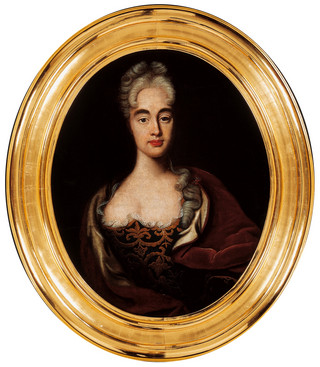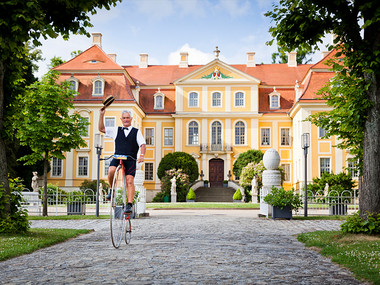Like a comet, she rose at the court of Augustus the Strong. Abysmal was her fall ending in lifelong captivity at Stolpen.
On October 17, 1680, she was born at Depenau Manor in Holstein. She originated from an old noble family of those von Brockdorff. In her early youth, Constantia became lady-in-waiting at Gottdorf Palace near Schleswig and later in Wolfenbuettel. A pregnancy ended her eight-year stay at court. Nothing has ever become known of the father or the whereabouts of the child.
After the shame of the illegitimate child, Anna Constantia got married to Saxon Privy Council and Senior Taxation Director Adolf Magnus von Hoym. This wedding brought her to Dresden. The marriage with Hoym is in shatters after a short while. Hoym divorced her in January 1705.
On occasion of a fire at the Hoyms’ house, Augustus the Strong had taken notice of Anna Constantia. She refuses to become a mistress, after her experience of an illegitimate child and a failed marriage. Despite that, she moved into a house on the Taschenberg in the summer of 1705, in the immediate vicinity to the palace. In December 1705, Constantia received a secret contract that declared her to be the spouse of the King. Augustus vowed to be eternally faithful to her. She felt as Electress and Queen. The Emperor raised her to be Imperial Countess of Cosel. Her claim, appearance and her far-reaching influence went far beyond the social scope. A new Polish mistress seemed appropriate for asserting political interests. She was quickly at hand in Maria Magdalena Countess von Doenhoff. After the Cosel was disempowered, she had to move out of her residence, Taschenberg Palace, and withdraw to Pillnitz. A chain of events and differences, such as the dispute about the promise of marriage, lead to her arrest.
At the age of 36, she went to Stolpen Castle on Christmas Eve 1716. As an old and forgotten woman humiliated by fate, she died at very old age of 84 in the Johannis (Cosel) Tower. Even in death, she did not leave the walls of the fortress. Her burial place is in the Castel Chapel.
Today, Countess Cosel is regarded one of the most well-known women in Saxon history. She takes a special rank among Augustus the Strong’s mistresses. As a symbolic figure, she stands for a fruitful time of Saxon-Polish union and Augustinian Baroque.
In the Johannis (Cosel) Tower, an exhibition on three floors commemorates her adventurous and fateful life.
The topic of »Stolpen Lifelong«. Here, we illuminate the »Cosel Myth«. You can admire precious items in their original, such as the “Cosel Bible” and a newly acquired original letter written by the imprisoned lady and a multitude of objects in connection with the name of Cosel.





